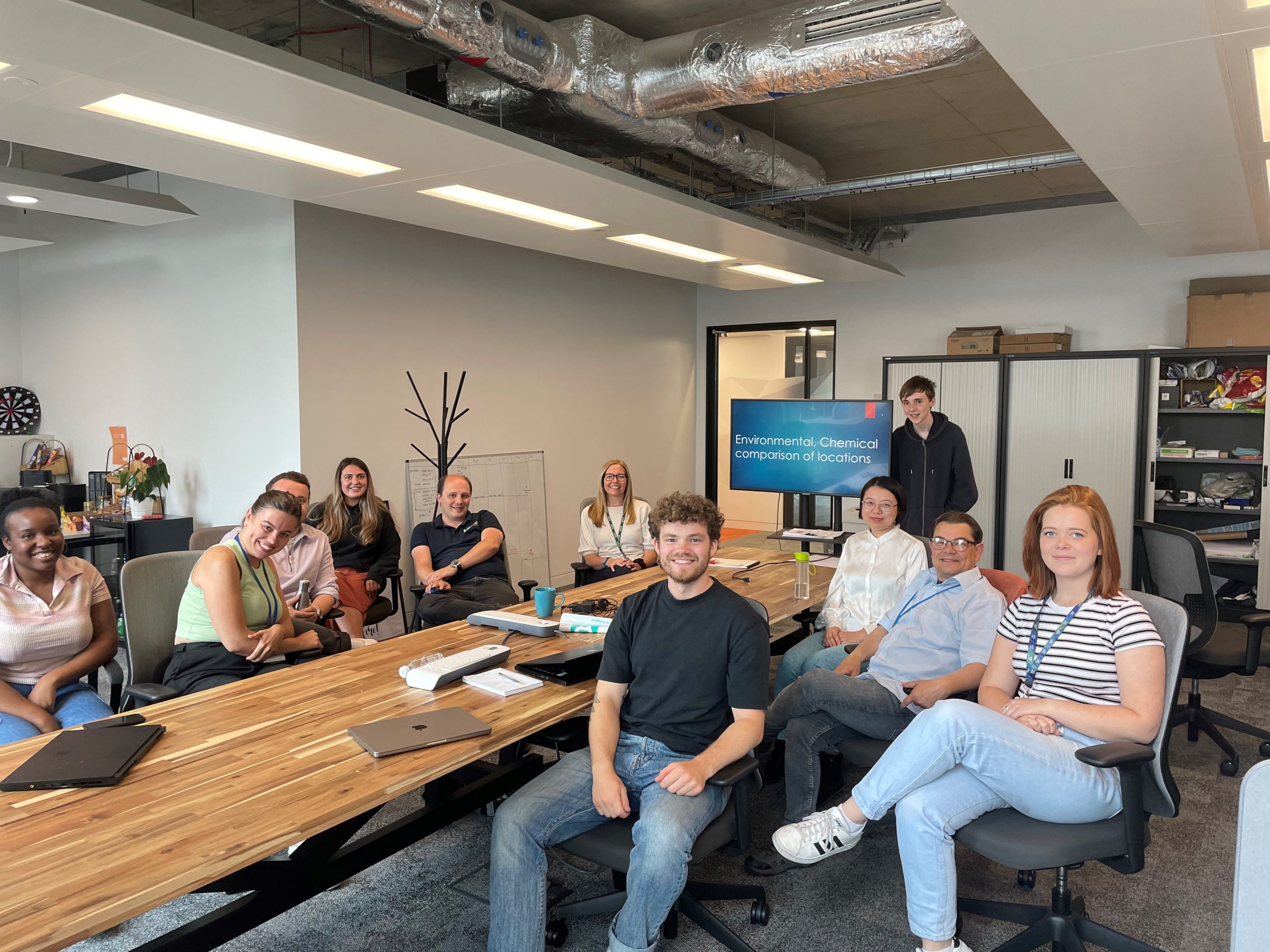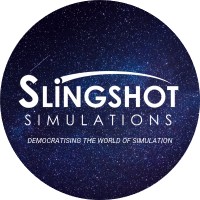Slingshot Simulations invited 17-year-old school student Nathan Whitehouse into our office within the Nexus Building for data analysis work experience, to utilise our decision intelligence platform Compass: Engine.
Nathan, who is incredibly passionate about scientific subjects, specifically chemistry, led his own research-based project over the course of the week. He found Slingshot through our sponsorship of Space Hub Yorkshire, a driver of Space activity and satellite geospatial markets across the region.
He was able to independently coordinate a project focussing on atmospheric data from Nottingham, Leeds, London and Shropshire Hills to evaluate air quality comparisons. Nathan presented his findings to the team as the week commenced.

“It’s fantastic that our platform now has the capabilities and the ease of use for a young school pupil to come into our office and play around with it to demonstrate some interesting data-based conclusions”

Joe Leach
Tech Strategist, Slingshot Simulations
Nathan’s personal articulation of his week with Slingshot can be found below:
Why was chemistry the subject I focused on?
I came to Slingshot with an interest in chemistry. The brilliance about chemistry is that everything is linked together. Everything which will ever be made is in the periodic table. Chemistry has the craziness which other subjects’ possess but struggle to be able to apply. Many chemical reactions will testify to that idea. There are only a select few other subjects where the crazy is true, and I study those as well for the same reason.
Finding and Planning my work experience.
When trying to find work experience, I had a focus on chemistry but that was tricky as many companies either had nothing to offer or they didn’t have a link to chemistry. I came across Slingshot Simulations through looking at Space Hub Yorkshire’s partner, as Physics was also something I was looking at. The key idea was how to link data to chemistry as I had no start data. I concluded that I had to find some data. I managed to find some data, but I had to collate it as it was from multiple sources.

Working with Slingshot Simulations and my data.
My initial ideas were to find the links between properties but that turned out to be too simplistic as a brilliant program called Weka could do that with just a few clicks. I was advised to try to link other data into my own. I created the idea to add atmospheric and geological data from different places. This could then be linked to my data to give it the ability to be geospatially analysed. I was then given the two extra data sets and I used Nottingham, Leeds, London and the Shropshire Hills as I knew that these locations were evenly spread across England and Wales with varying levels of urbanisation. I decided to explore the link between all three of these to maximise the potential gain in information.
What was I able to deduce?
My data led to conclusions such as: the air quality in Leeds could be improved as nitrogen dioxide and low-level ozone levels were above the recommended values. Furthermore, by comparing locations, I could see that the targets set by the world health organisation for pollutants were realistic as other places such as Nottingham managed to have low enough levels of these pollutants. This directly leads to the conclusion that we are affecting our atmosphere as the rural location of Shropshire Hills had pollutant levels below the recommended value whereas the highly urbanised London has levels above the recommended values. Given the fact that the values vary for different locations, I can see that we are affecting the atmosphere on a local level, and it is not just global pollutants affecting our atmosphere. This shows that our activities within the local area are having an impact on the atmosphere. Just as the Haber process-which is a reaction which uses nitrogen and hydrogen to make ammonia- can be reversed, so can our actions. Chemistry and this reaction demonstrates how change can be made and just like the reaction we can control the equilibrium between our environment and local area. We can also link this to geology as if we do not act then acid rain will erode rocks and shorelines will recede due to changes in our ocean.
Please visit our Careers Page if you feel that you’d be able to take advantage of the fantastic opportunities available at Slingshot Simulations.
